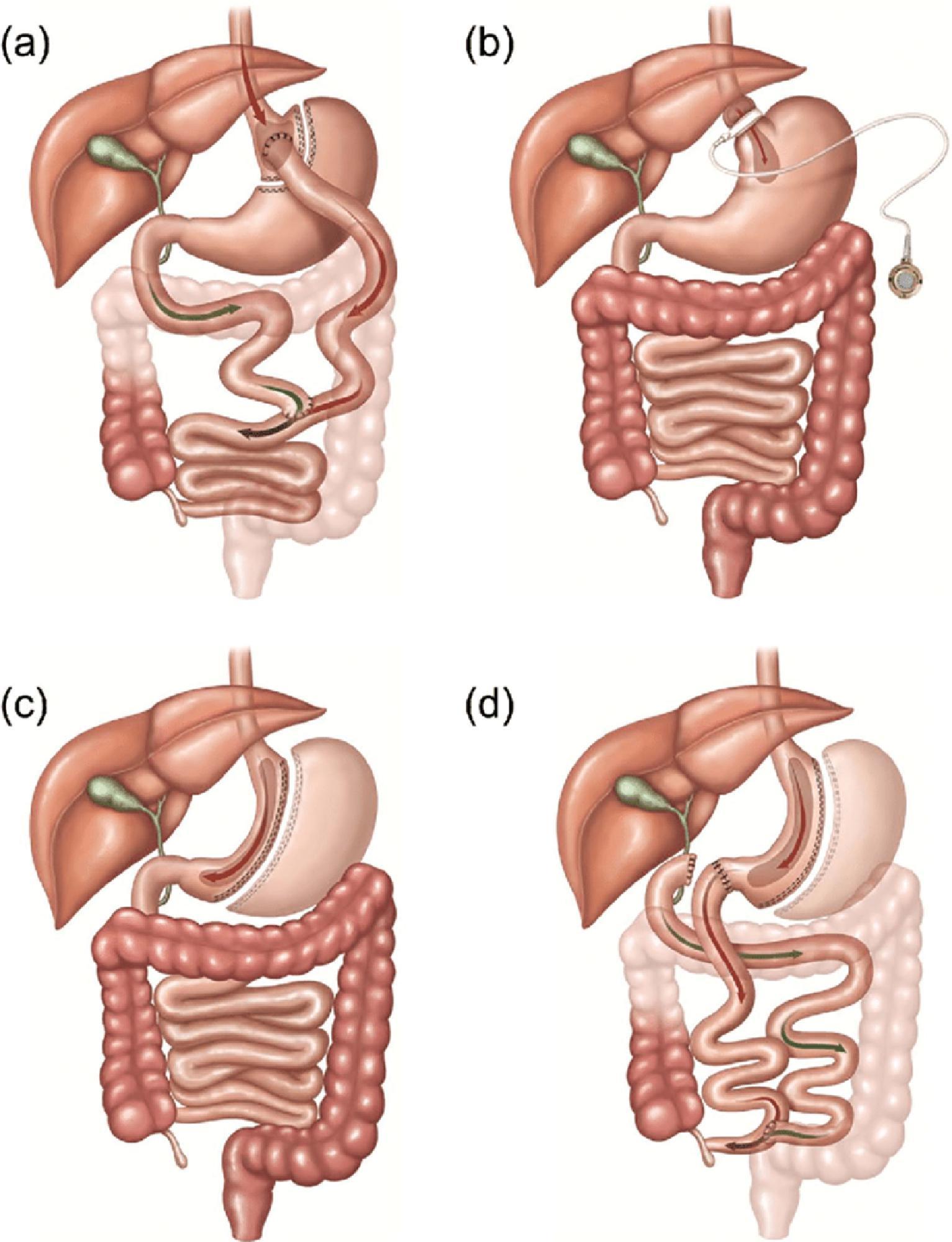Physical Address
304 North Cardinal St.
Dorchester Center, MA 02124
Bariatric surgery, or weight loss surgery, is any procedure intended to reduce weight in patients with morbid obesity. Bariatric, translated from Greek, literally means “weight medicine.” Bariatric surgery procedures are classified as restrictive (reduced stomach size; limiting the amount a patient may comfortably eat at any given time) or malabsorptive (alterations to the small intestine length to inhibit caloric absorption). Procedures may be restrictive (e.g., adjustable gastric band [or LAP-BAND®] or vertical sleeve gastrectomy [VSG]), malabsorptive (e.g., biliopancreatic diversion/duodenal switch [BPD-DS]), or both (e.g., Roux-en-Y gastric bypass [RYGB]).
Bariatric surgery centers utilize an interdisciplinary team to evaluate patients for suitability and educate them on the lifelong changes that must be implemented to be successful following surgery; patients must comply with strict dietary and exercise recommendations.
It is well established that surgery is often the only definitive treatment for patients with morbid obesity and is particularly effective for those patients who are 100 or more pounds overweight with comorbidities such as obstructive sleep apnea, diabetes mellitus, hypertension, and hyperlipidemia. Bariatric surgery is recommended in the American Diabetes Association guidelines for management of obesity in the treatment of type 2 diabetes mellitus (T2D).
All bariatric surgeries are performed under general anesthesia using laparoscopic techniques. The VSG uses a linear stapling device along an esophageal dilator to remove and discard approximately 80% of the stomach. The remaining tubular gastric conduit is just slightly wider than the esophagus. The RYGB uses a linear stapler over a sizing balloon to create a small gastric pouch, approximately the size of an egg, that is separated from the remainder of the stomach. The remnant stomach remains in place. The duodenum is bypassed by creating an end-to-side jejunojejunostomy, and a Roux limb is anastomosed to the gastric pouch. This leaves a common channel of small bowel where food mixes with digestive juices and is absorbed into the blood circulation. Following either a VSG or RYGB, a 1- or 2-night stay is expected in the hospital. Fluoroscopic imaging using water-soluble contrast, rather than barium, may be performed during the hospitalization. Fig. 11.1 illustrates the major types of bariatric surgery.

Patients with morbid obesity are afflicted with high recidivism rates following medical weight loss and diet programs. Bariatric surgery is highly effective at attaining substantial weight loss over the first 1–2 years postoperatively, but many studies have also proven that its effects are sustainable over a decade or longer. The measurement of percentage of excess body weight lost (%EBWL) is a standard metric monitored in multiple randomized controlled trials. RYGB patients average 59% EBWL and VSG patients average 53% EBWL at 10 years. Remission of T2D may occur within days of RYGB, and in both RYGB and VSG patients, a T2D remission rate of approximately 80% is common more than 10 years postoperatively. A substantial body of evidence has shown that surgery achieves superior glycemic control compared with lifestyle or medical interventions.
The VSG and RYGB are the most popular bariatric surgeries performed in the United States. The American Society of Metabolic and Bariatric Surgery estimates the number of procedures performed annually by using quality assurance data. In 2011, 158,000 surgeries were performed (17.8% VSG and 36.7% RYGB). The total number of surgeries continues to grow, with 252,000 performed in 2018 (61.4% VSG, 17.8% RYGB, 15.4% revision). The use of adjustable gastric bands continues to decrease, which has consistently been less than 5% since 2016, and the BPD-DS has been less than 1% since 2014. Some of the undesirable features of adjustable gastric bands are that patients may require surgery for removal in the event of band slip, dysphagia with or without distal esophageal dilation, or esophageal motility disorders.
Become a Clinical Tree membership for Full access and enjoy Unlimited articles
If you are a member. Log in here